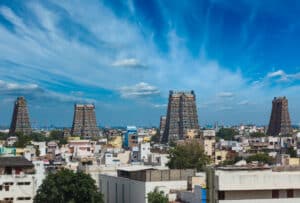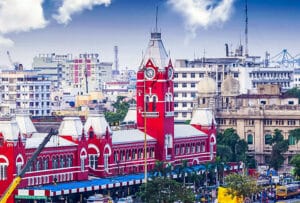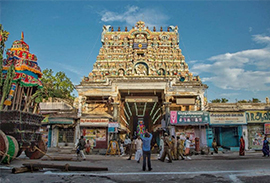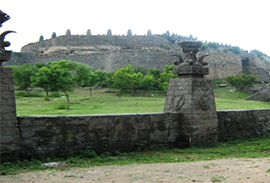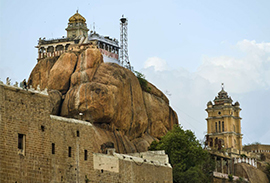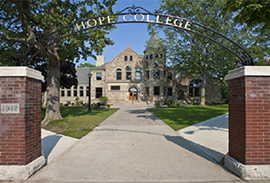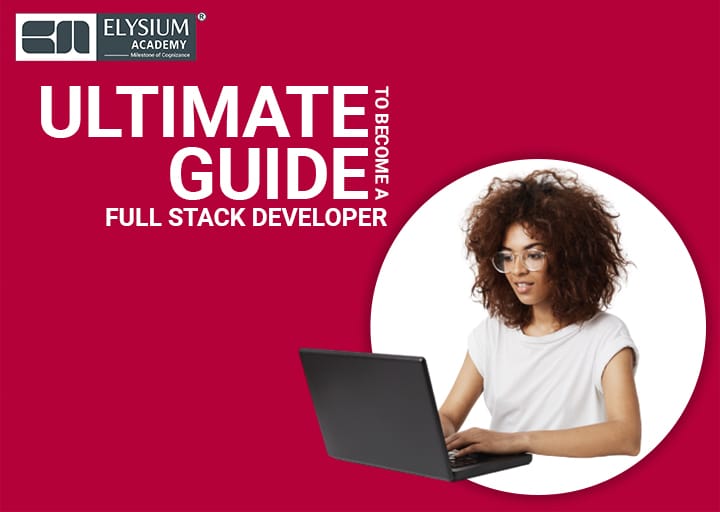Full Stack Developer – A Guide and Knowledge
Full stack Developer: Boasting attractive pay scales and increase potential, full-stack developers have grown some of the most desirable professionals in the world. A profession that stands out in the IT industry for its multifaceted creation, full-stack development is a holistic engineering method that tends to all aspects of web development.
Full-stack development notes the development of both the front-end and back-end of a web application or website.
A software stack collects multiple components in a software application to guarantee the application’s smooth running. This includes software products, patches, coding frameworks, servers, operating systems, database tools, and so on. To facilitate user interaction, run calculations, and power back-end functions, these components are on top of the other: a “full-stack.”
Full-Stack Developer
A full-stack developer is an engineer who can manipulate all the work of databases, servers, systems engineering, and clients.
In fact, “full-stack” refers to collecting a series of technologies needed to complete a project. “Stack” refers to a collection of sub-modules. These software sub-modules or components combine to achieve the established function without the need for other modules.
Their responsibilities include
Getting project requirements from clients and stakeholders
Studying project requirements and formulating solutions
Sketching user relations
Generating databases and servers
Measuring for bugs in code
Remodelling codes using hardware and software
Using methodical testing methods for problem-solving
Cross-platform optimization
Step by Step Guide For Full Stack Developer
Are you an extremely motivated IT professional who aspires to become a full-stack developer? Or are you a coding enthusiast who dreams of becoming one someday? What does it take to become a quality full stack developer?
Concede Your Experience Level
If you are a coding enthusiast or an amateur and your basics are good, you can still become a full stack developer with hard work and patience. Understand where you stand on the beginner-expert spectrum and define your goals.
Get yourself fascinated by web development and all the technical aspects of it.
Take part in simple coding projects, understand the basics of programming, web applications work, build simple websites before, and have a decent understanding of HTML course, CSS, PHP, and so on. Grab hands-on experience in front-end or back-end engineering.
Determine your Goal
It is essential to define your interests and goals to keep the right kind of technology and the right set of tools. Ensure that you will be a Freelance Developer or a consultant for an organization or work for your dream project or develop an app on your ideas. Be confident in choosing the right set of the path to determine your goal in Full Stack Developer.
Get Complete Knowledge of Tools
Some of the basic Computer-based tools required for Full stack development is Computer and its operation systems, text editor, browser and Terminals. Most importantly, Full Stack development is based on Front end and back end developer tools.
Front End tools deal with
1) Bootstrap: Bootstrap is an open-source framework used in web development and has design templates for navigation, typography, buttons, and so on. The biggest advantage is the uniform appearance of all elements across all browsers.
2) Angular.js: Angular.js is a framework Google developed. It allows open expression of your application’s components using HTML’s syntax and templates.
3) Foundation: Foundation is a CSS framework used to execute responsive user interfaces. It has all the patterns necessary to create a responsive website or application.
4) Python: Python is a general-purpose programming language that suits beginners that supports functional and object-oriented programming, and concentrates on code readability.
5) JavaScript: JavaScript is a programming language that assists prototype-based object orientations. It benefits the development of interactive pages for all devices.
6) Elixir: Elixir is a programming language on Erlang VM. Its use is for maintainable and scalable applications.
7) HTML and CSS: HTML and CSS make the building blocks of full-stack development. Irrespective of the back-end language or frameworks you use, you forever need HTML and CSS for front-end development.
Back-End Tools deal with
Django: Django is a Python-based framework used for server scripting. It encourages practical design and quick execution.
Ember.js: Ember.js is one of the popular choices of web developers for creating modern web applications. Though it is primarily for the web, this Javascript framework is also used to build mobile and desktop applications.
Lodash: Lodash is a JavaScript library that follows functional programming. It helps developers write short, maintainable codes.
React: React is a JavaScript library Facebook maintains to build single-page applications and mobile applications..
D3.js: D3 or data-driven documents is a JavaScript library used to develop dynamic data visualizations for browsers. It gives developers great control over visuals.
Databases
Most web applications and websites need a database or two to store data. Some popular types of databases full-stack engineers Cloud Database, NoSQL, Lightweight and Cache, and Relational Database.
Thus, Full stack development is one of the highest-earning jobs in the world. Because it influences business and marketing, full-stack development is a needed service in all sectors. It can help organizations stand out in the business world and increase their revenue. While full-stack programming is one of the most rewarding IT jobs, the remuneration of a full stack developer depends on factors such as core skills, additional skills (WordPress, databases, UI/UX basics, etc.), the location of the organization, demographics, and experience.


